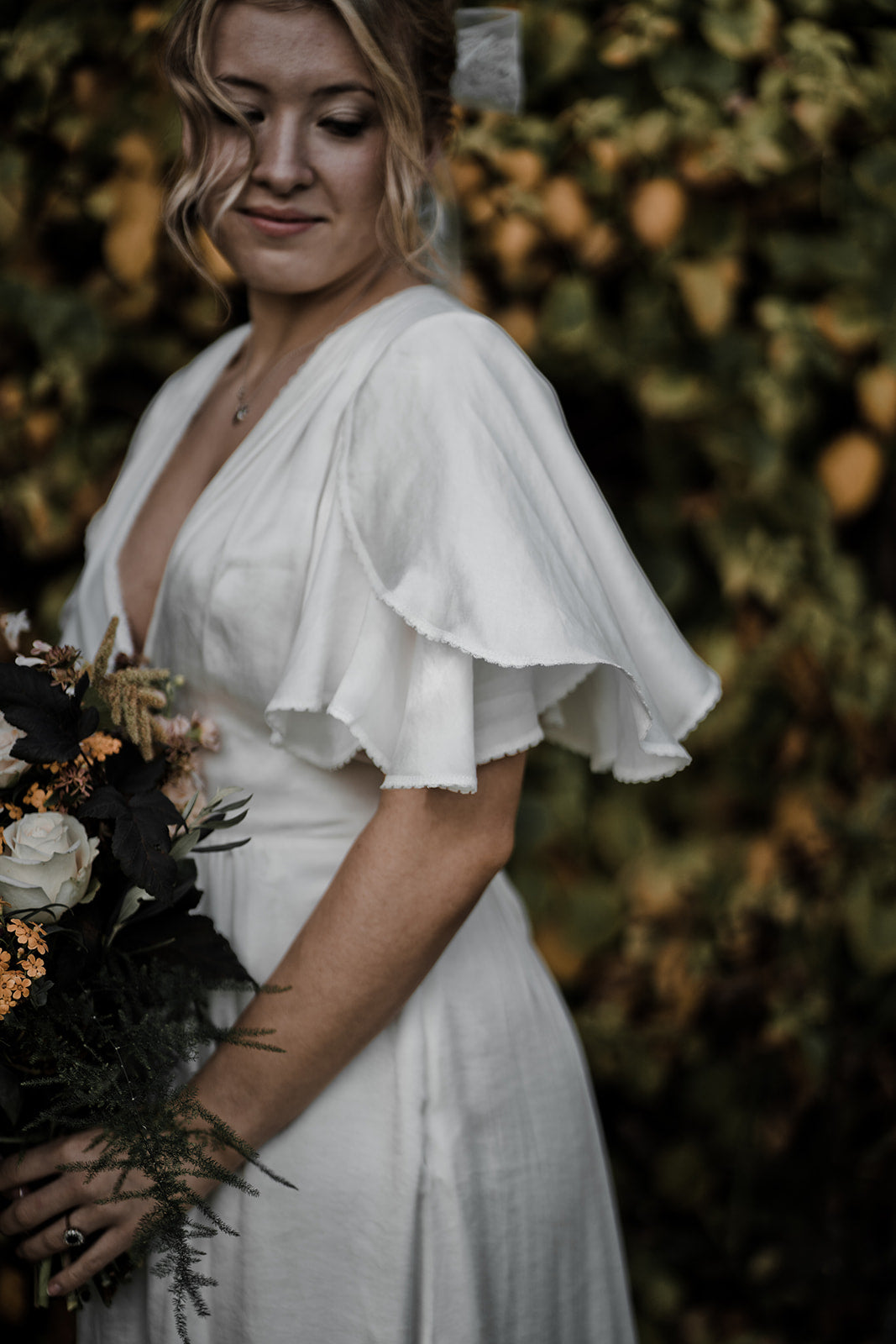Wedding dress materials matter
How do you know if you have been offered factual information about the materials of your dress when dress shopping? Here are the basics that might surprise many brides on their journey to find the perfect dress that not only matches their values but also expectations on how they want to feel when wearing their wedding dress.
The process of creating fibers and fabrics is hard even for someone like me who has spent 10 years working in the wedding industry, so I can only imagine how much more so it is for someone who hasn't studied fashion at all. In order to assist brides ask the proper questions and select a wedding dress that reflects their values, I wanted to clarify the most basic fabric components.
Weave and material: The two key components of any fabric
Let’s go back to the beginning and start with the basics. Fabrics have two key components in them: the weave and the material. It's important to understand the distinction between the two because doing so will enable you to choose a wedding dress with confidence.

Fabric weave
The term "weave" describes the specific technique in which the warp and weft yarns were woven together to make the cloth. Various weaves have various characteristics. The fabric can be made more stiff or drapy depending on the weave. Satin, crepe and georgette are all different types of fabric weaves.
Examples of fabric weaves: satin, georgette, crepe, tweed, charmeuse, twill, gabardine, jacquard, organza
Fabric material
Yarns, which can be made of anything from cotton to polyester, are used to weave fabrics. The combination and ratio of these yarns then determines the fabric's composition. For instance, a fabric may be composed of 90% cotton and 10% nylon. This indicates that 90% of the yarn used to weave that fabric is made of cotton, and 10% is made of nylon. Cotton, silk, tencel, and polyester, for instance, can all be turned into yarn and then woven into fabrics with weaves like georgette, crepe, or satin.
Examples of fabric materials: cotton, silk, polyamide, lyocell, ramie, polyester, wool, viscose, modal
Ask questions
When shopping for your sustainable wedding dress, it’s important to ask questions along the way to make sure you’re making the right decision. Ask what material the dress is made from, what materials is the lining, where the dress was made, who made the dress etc. The bridal consultant in any bridal boutique or designer showroom should be able to tell you exactly what the dress was made of and where it was created. If they can’t tell you the answer right away, they should be able to find it out and let you know later. Transparency is an important part of sustainable and ethical business.

Avoid being mislead
However, sometimes the brands and bridal consultants get it wrong. Here are two examples of incorrect and misleading answers I have seen bridal brands use online:
- If you ask your bridal brand/consultant where the fabric was made and the answer is that the fabric supplier is British they haven’t answered your question in the slightest. Most suppliers only sell the fabrics, they don’t manufacture them. The supplier may be based in the UK, yet, the fabrics they sell might be made in Colombia, China or Thailand for instance. It’s good to of course support British suppliers but the brands shouldn’t give the brides a misleading answer this.
- If you ask your bridal brand/consultant what material the dress is made of and the answer is satin, they haven’t fully answered your question. Either they lack product knowledge or they are attempting to avoid mentioning that the dress is composed of polyester satin. If the dress was made of silk satin, they would shout it from the rooftops. If you're looking for a dress that doesn't make you sweat your socks off, then you need to make sure your dress is made of silk satin, not polyester satin.
Sustainable bridal wear brands should be able to tell you even more about the materials they have chosen to use. Here, at Indiebride London, we know where every single fabric and lace we use was made, and track the production chain all the way to the origin country of the fibers of the yarn that the fabric was made of. You can see the origin of the fabrics and fibers of each dress on the product pages and learn more about the material we use here.
Do your research and don't be hesitant to ask questions. Consultants and bridal wear brands are there to help you choose the dress that matches your values and relieve you of the stress of making the wrong decision.
Miina
xx
Image credits: Agrestal Visuals / Joe Morley / Megan Donati Photography

